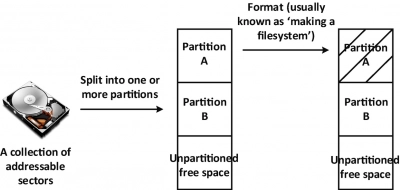Partition Recovery vs Fat Recovery: which one is better?
Here you will find out:
- how to deal with Tiworker.exe issue
- how DiskInternals Partition Recovery can help you
Ready? Let's read!
What Is The FAT File System?
The FAT file system is one of the commonest among Windows OS users. Well, even Apple’s macOS uses FAT for volumes that are not the boot disk. This file system was initially created in the 1980s, it is short for File Allocation Table, and there are different versions of this file system.
The versions are represented by the number of bits per write they support; thus, we have FAT12, FAT16, and FAT32, which uses 12, 16, and 32 bits, respectively. FAT file system is the default file system supported by most removable storage drives, which include USB flash drives, SSDs, and others.
How To Recover FAT Files On Hard Disk Using Partition Recovery
To perform FAT recovery - recover data from a FAT drive - you need a data recovery program that supports the FAT file system. Interestingly, the DiskInternals Partition Recovery software supports FAT file systems, which includes FAT12, FAT16, and FAT32, along with other common formats such as NTFS/NTFS5 and EXT2/3/4.
Hence, with the DiskInternals Partition Recovery program, you can get back lost and deleted files from a FAT-formatted hard drive or external storage. With support for three unique scan modes and three built-in recovery Wizards, DiskInternals Partition Recovery is fast, reliable, and effective for FAT recovery.
FAT File System Structure

Disk partitions are divided into two major parts: system area and data area. The system area is updated by the file structure (FAT) and occupied by the following data: boot record (BR), root directory area (nonexistence in FAT32), reserve area, and file allocation tables.
On the other hand, the data area is where your files and directories/folders are stored, and you can divide it into sections and clusters. FAT stores the entries for each cluster. The FAT32 file system has a maximum file size of 4G.
What Is The Reason For The Loss Of Files From The Fat File System On The Hard Disk Or Other File Medium?
There are many things that can lead to data loss; regardless of the storage drive's file system, data loss is imminent and can occur at any time. The common reasons for data loss on a FAT-formatted drive include the following:
- Accidental or Unintentional Deletion: When a PC user mistakenly deletes the data/directory.
- Bad Sectors: If your HDD or SSD or external storage has bad sectors, it can cause the sectors/partition not to be recognized by your PC’s OS.
- Malware/Virus: If a virus or malware finds its way into your PC, it'd corrupt your files and make them unreadable.
- Sudden/Forceful Shutdown of the PC: Sometimes, when you forcefully shut down a computer, it leads to data loss.
- Power Surges: In some cases, a power surge can damage a hard disk and make the files that are saved inside become unreadable.
Summary
Conclusively, to recover files saved in a FAT drive, it is best to run full partition recovery; this way, you'd get back everything that has not been overwritten with new entries/data.
When files are deleted from a FAT drive, they don't just delete immediately, they are retained in the file attribution tables until they are overwritten with new data. So, if you notice that your files are missing, it is better to run a recovery program to retrieve them before they get overwritten.
